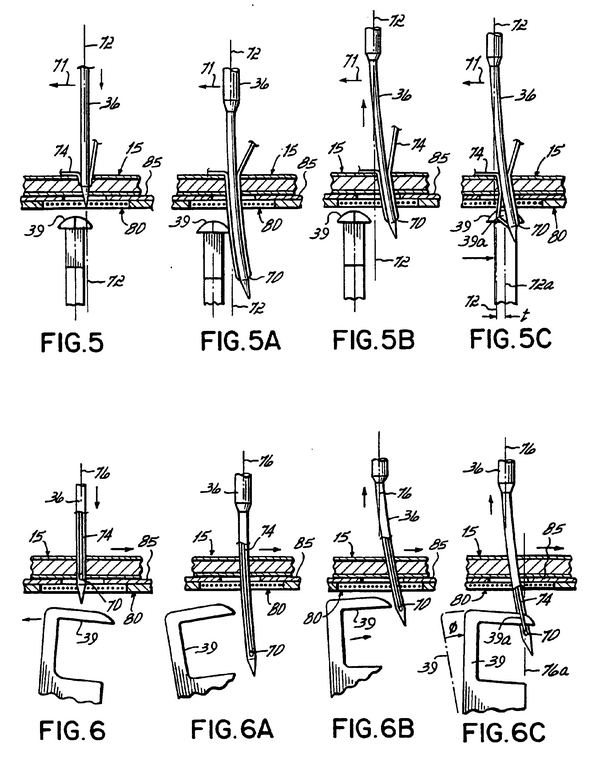Principle of Chain Stitch Formation Technique:
Chain stitches are the most used stitches in garments. There are so many who still don’t know the stitch formation technique of chain stitch. As a person from the readymade garments industry, everybody should know about it. As its importance, this article has shown an easy explanation for the principle of chain stitches formation technique.
What is Chain Stitch?
It is made by using one or more groups of sewing threads. The stitch which is formed by using two or more groups of sewing thread is called multi-thread chain stitches. Here, the loop of one group of sewing threads is bounded by interloping with the loop of another group of sewing threads. Stitch type-401 is called multi-thread chains stitch and the following are the steps referred to as the principle of stitch type-401 formation.

Chain Stitch Formation Technique Followed in Apparel Industry:
This type of stitch is produced by following the below steps.
Step-01:
- The needle is entered through the fabric with the sewing thread and reaches into its lower position.
- The needle contains the old loop around its blade.
- A new loop is formed when the needle moves upward a little.
Step-02:
- The new loop is caught by the looper (above the needle eye below the old loop).
- The needle moves upward.
- The old loop is cast off from the needle blade and slides on the base of the new loop that is still held by the looper.
- Interlacement occurs under the fabric (between the new loop and the old loop).
- At the same time, the fabric is also moved one stitch forward due to the feed dog mechanism.
Step-03:
- The looper enlarges the new loop.
- So that when the needle again entered through the fabric, it passes through the loop.
- The looper leaves the loop which is held on the needle blade.
- This loop now becomes the old loop.

Mayedul Islam is a Founder and Editor of Garments Merchandising. He is an Expert in Garments Merchandising. Writing is his passion. He loves to write articles about Apparel, Textile and Garment Washing specially on Merchandising. Mail him at mayedul.islam66@gmail.com

